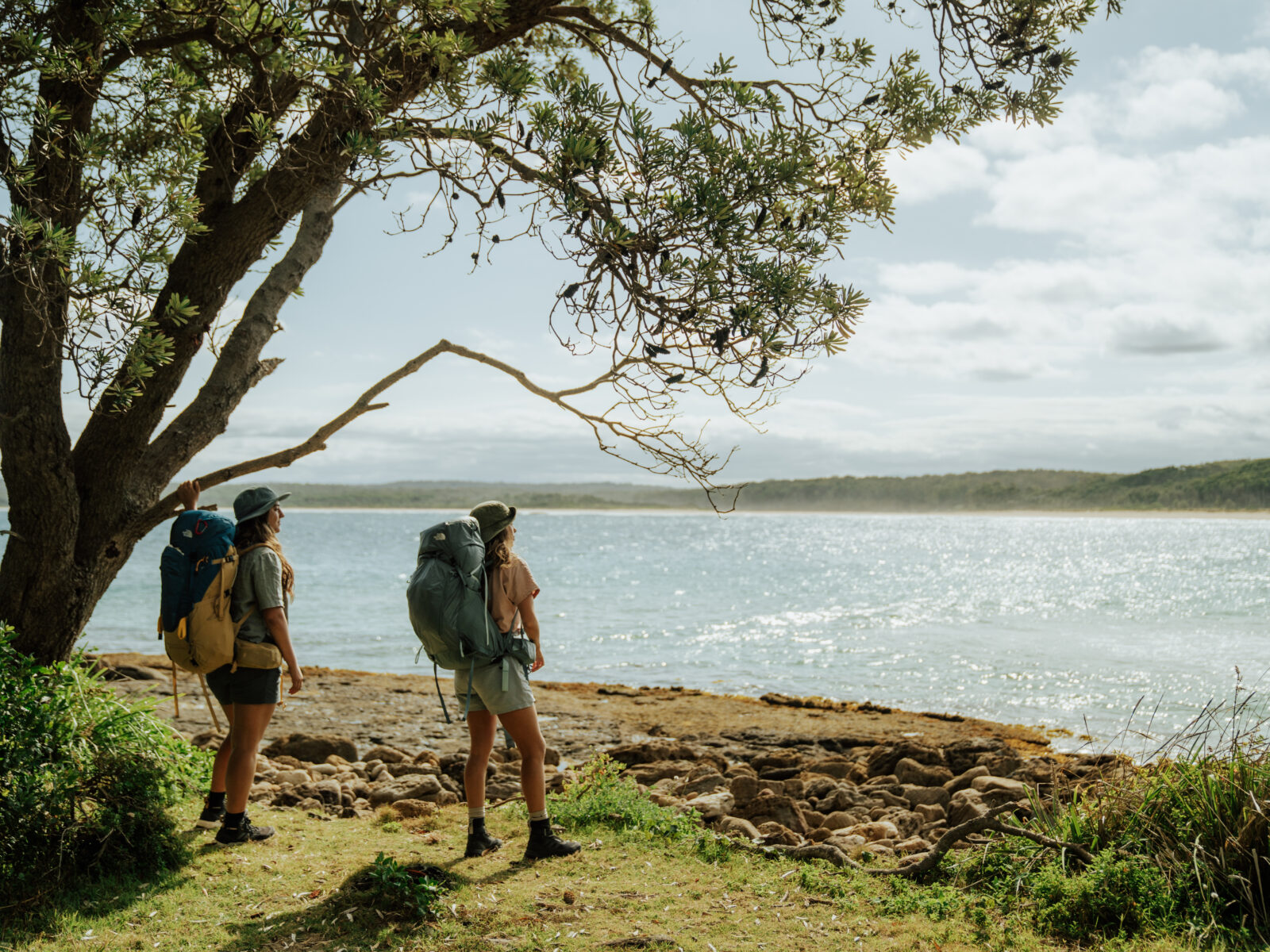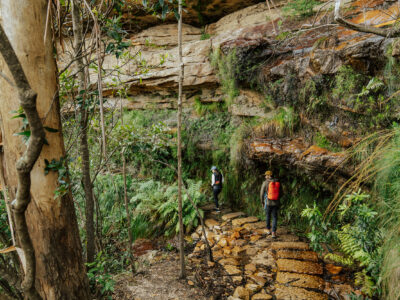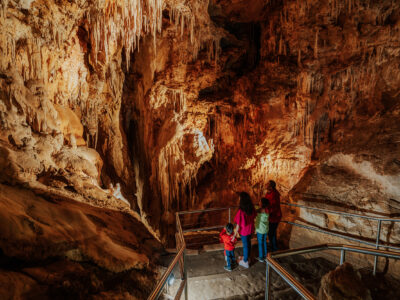Heading off on a multi day hike? It’s one of life’s great pleasures, but the right gear and a good dose of preparation goes a long way.
When you’re preparing for a multi day hike it’s important to check that all of your hiking gear is in good, working order and will be suitable for the conditions you expect on the hike. If it’s not, or you’re missing items, it’s important to borrow, rent, or buy the right gear, as the wrong gear can be the difference between a great trip and a failure (and in the worst cases, it can be dangerous).
The next five points generally require a bit of research, but once you have a reliable stove, sleeping bag, tent, or shoes, you won’t have to start again every time you plan a hike (and you will get to develop strong opinions about why your item is the best choice).
-
1. Cooking
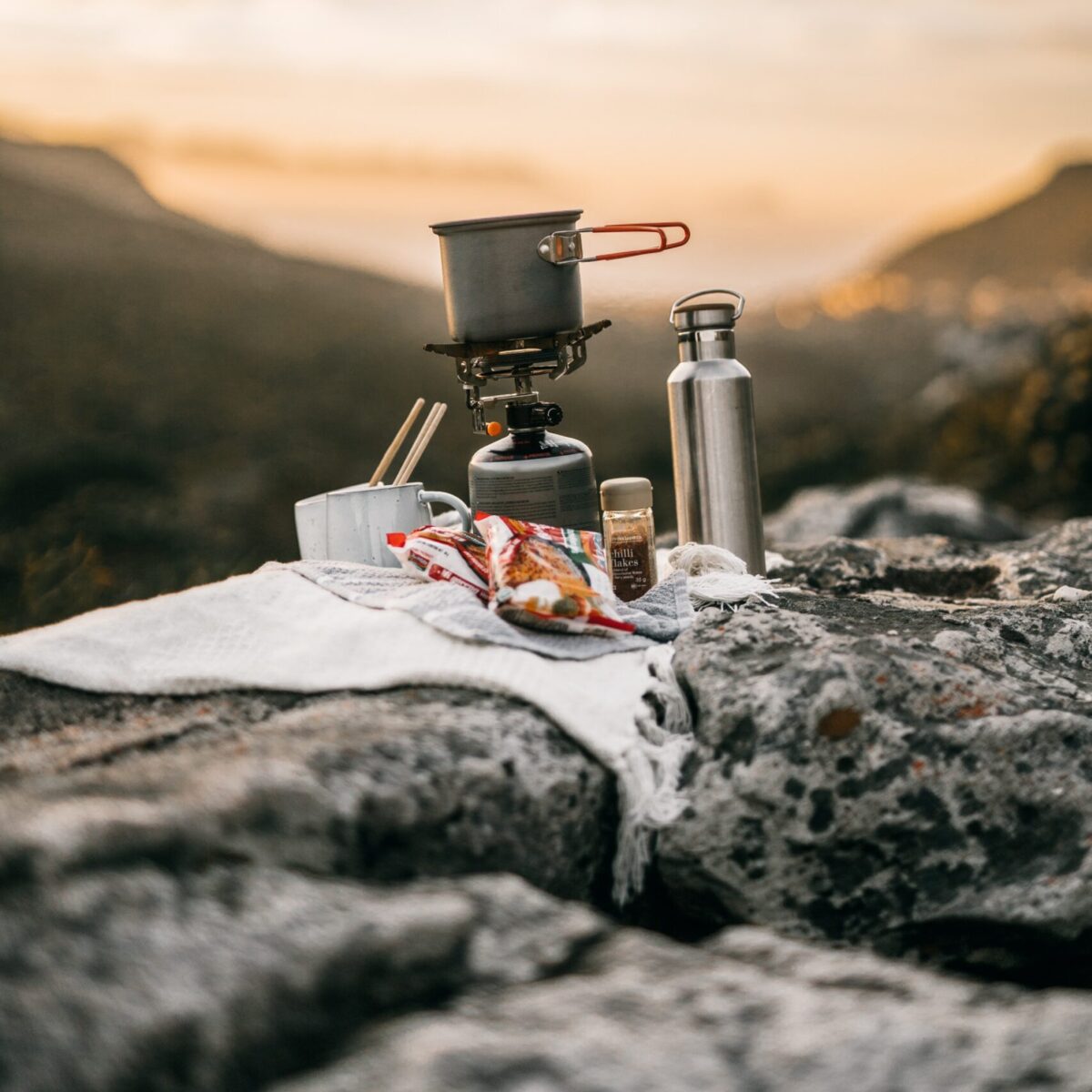 Photo Information
Photo InformationTaryn Elliott via Pexels (2021)
There are many ways to cook while overnight or multi-day hiking and they all have their pros and cons. The first thing you should consider is how many people you’re cooking for, are you each going to be self-sufficient or will you cook communally? You can save weight by sharing, but bigger pots and stoves can be a hassle.
Carrying your own gas or fuel stove is preferred (and often compulsory) in national parks. Not only is it safer for the environment than cooking on a fire (which risks bushfires and requires wood, plus collecting firewood is also prohibited in national parks) but it’s often much quicker and easier.
During a Total Fire Ban you won’t even be allowed to use a gas stove, but it’s likely you should postpone your hike anyway in this scenario.
A gas stove that uses butane canisters can be found in most good camping shops, and often they come in packs with pots and other utensils. If you’re cooking for a few people you might need to buy a larger pot separately, or even a lightweight frypan.
Liquid fuel stoves are another great option, especially in colder environments where gas stoves can lose their pressure. If you use this kind of stove, make sure the fuel bottle is clearly marked and seals tightly, you don’t want it leaking into your pack!
Ranger tip: It’s smart to keep one pot that’s just for boiling water. That way you’ll always have clean water to drink, add to dehydrated food, or make tea and coffee.
You’ll also need something to eat out of. Lightweight bowls, plates, cups and cutlery can all be bought at camping and hiking stores, but think about what you’ll be eating before you buy the whole set. Many hikers make do with a bowl, cup, and spoon (or spork) to save weight.
Ranger tip: Paper towel or a small sponge can be really useful for washing up after eating. Don’t wash up in rivers and creeks, it’s best to do this at least 100m from water sources to avoid contaminating them.
-
2. Clothing
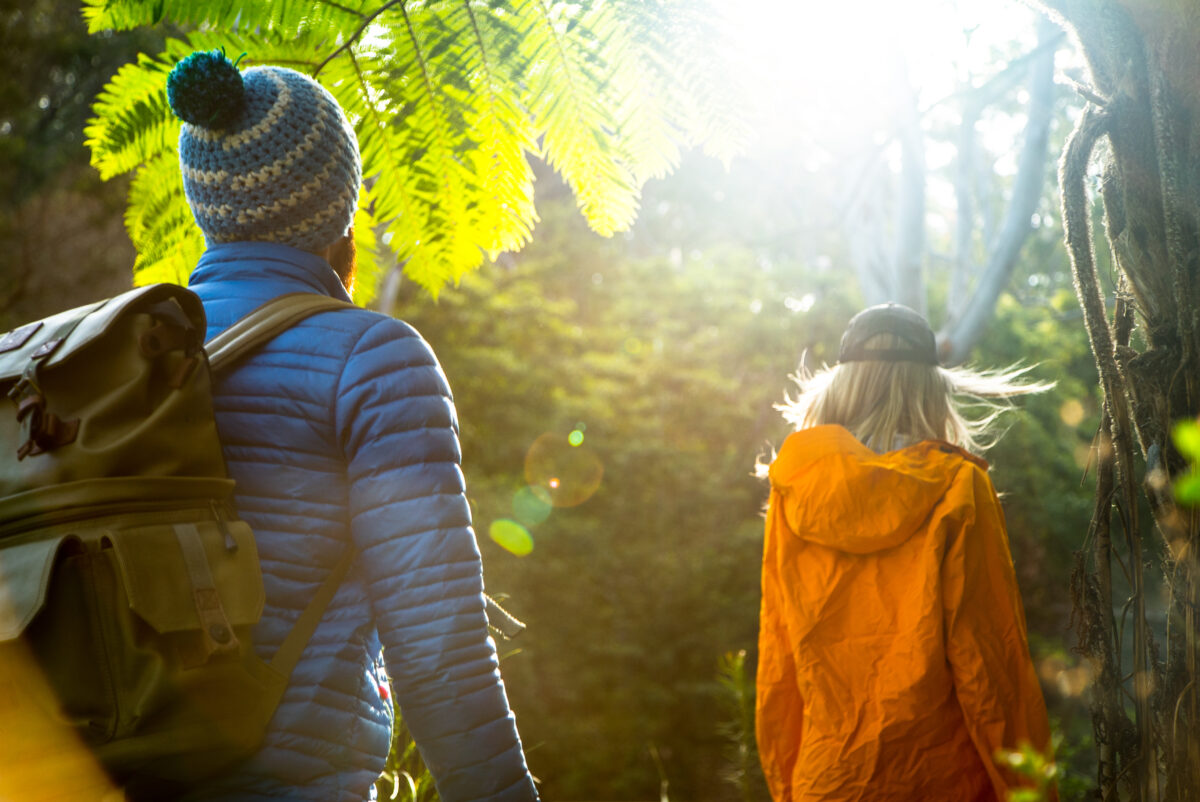
What to wear when hiking is a huge topic and much of it comes down to personal preference, but there are some key rules that will really help you out.
Layers
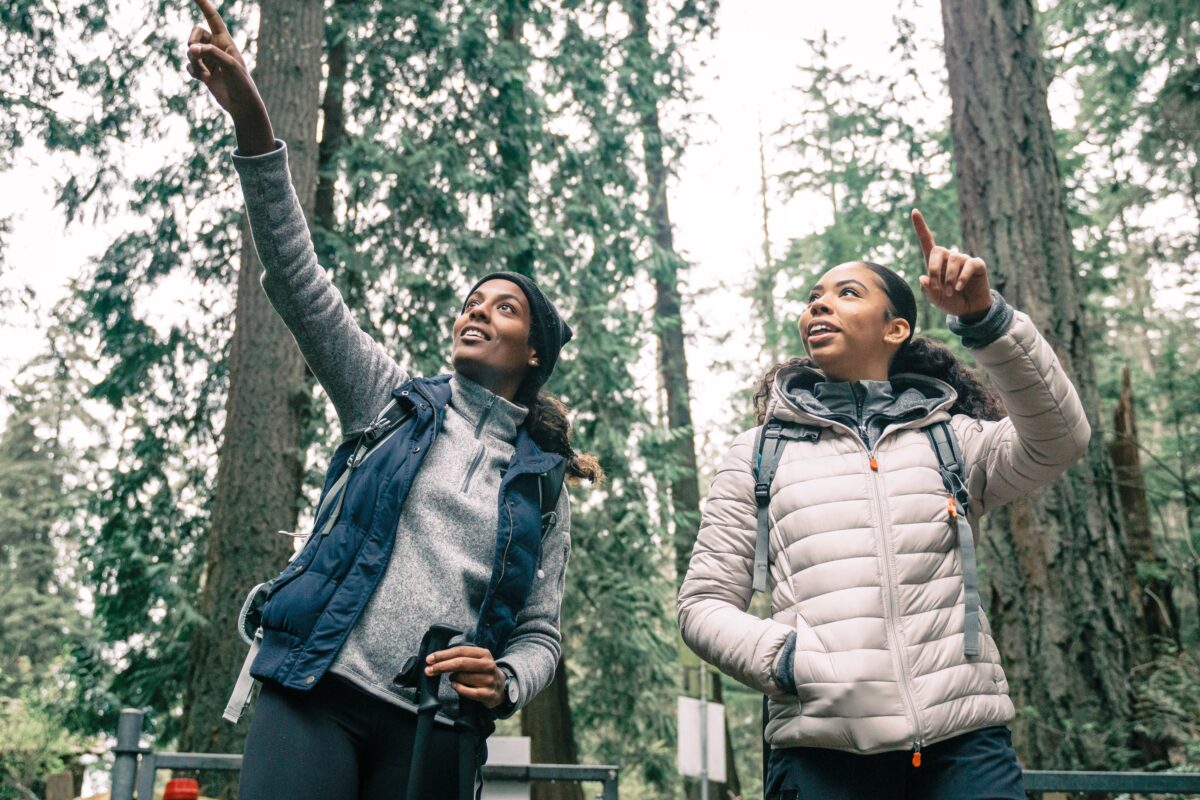 Photo Information
Photo InformationPNW Production via Pexels (2021)
A good layering system makes you adaptable to any situation, especially colder weather. The temperature changes much more outside than it does indoors and you won’t be able to tough it out like you might on a day hike. Your main layers are the baselayer, mid layer, insulation layer, and outer layer and they all have different purposes.
- Base layer – Traps warmth close to the skin and wicks away sweat. It’s often made of merino wool or a technical synthetic material.
- Mid layer – Adds more warmth and sometimes a bit of wind protection. It will be tougher than your base layer and often have pockets. You might use two mid-layers.
- Insulation layer – This is where puffy jackets and thick fleeces come in. The best thing about a layering system is that you often don’t need a super thick insulation layer because the layers underneath add to your warmth.
- Outer layer – A rain jacket or windproof layer is essential if the weather turns bad and will help you trap a lot of warmth as well as keep you dry.
Avoid Cotton
Cotton is very comfortable but it’s not great for hiking because of how it acts when it gets wet from sweat or rain. It can rub, causing chafing and blisters, and if it’s wet and close to your skin cotton will feel very cold.
Hiking stores sell clothing made from ‘technical’ synthetic fabrics or merino wools that solve many of these problems. Activewear is also becoming more popular, but it’s generally not as tough as hiking-specific clothing.
Cover Up
Spending all day hiking outside is blissful, but it really increases your risk of sunburn. Long sleeves and pants can help minimise this risk and you’ll be able to use less sunscreen. If your hike is a bit more challenging then long clothing can also help prevent scratches from branches, and make it harder for ticks, leeches, and mosquitoes to get to your skin.
-
3. Footwear
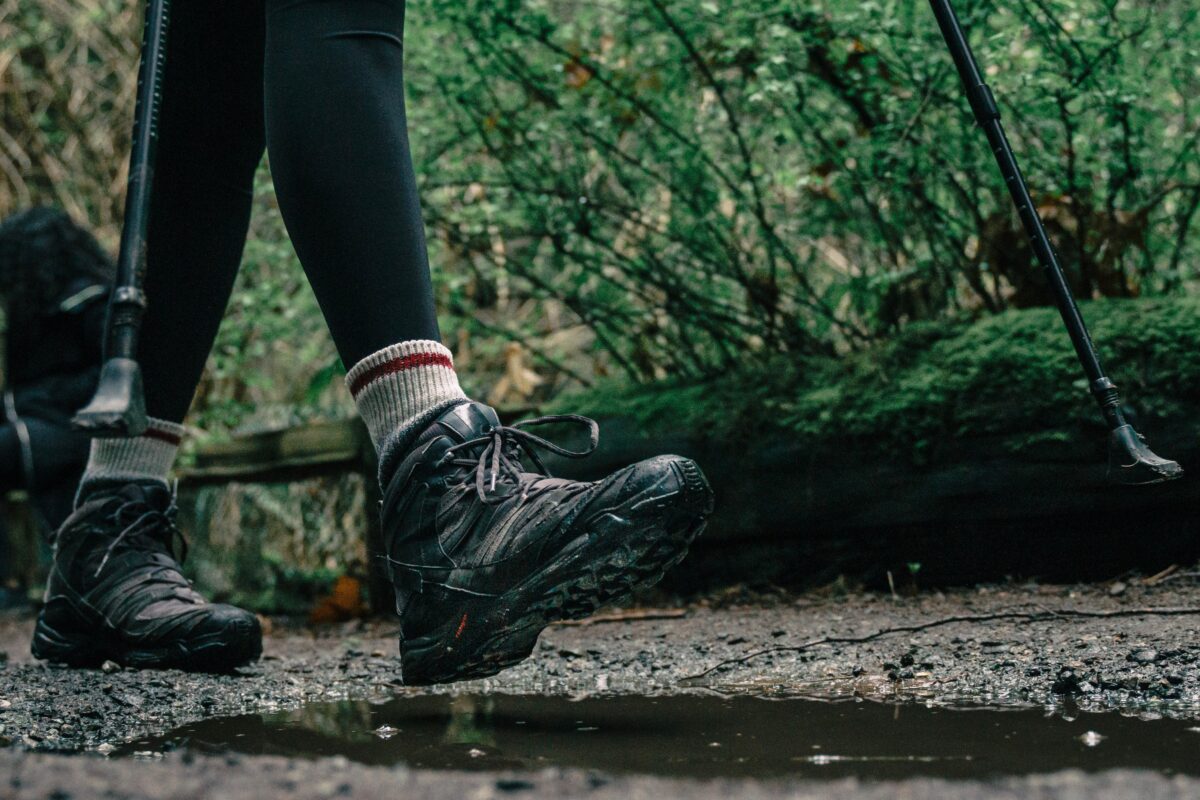 Photo Information
Photo InformationPNW Productions via Pexels (2021)
What you wear on your feet is one of the most important things to get right before a multi-day hike. Don’t worry though, you can get it right with a few simple… steps. Just don’t underestimate it.
You’ll want shoes or boots with good grip on the bottom, support for your feet on uneven surfaces (while walking with a heavy pack), and a great fit. Again, these can be found at good hiking and camping stores and it’s best to get fitted by a staff member.
It’s important to tell the staff your actual size (unless they have the tools to measure your foot). Many people try and add a size themselves which can confuse the staff and lead to a shoe that is too big. While you do want a bit of extra room for thick socks, swelling feet, and to keep your toes away from the end, you don’t want to overdo it. Going in the afternoon and bringing the socks you intend to hike in helps ensure a good fit.
While many modern hiking shoes and boots don’t require a long ‘break in’ period it’s always a good idea to do some solid walking, even some day hikes, in your shoes before you commit to hiking for a few days in them.
-
Trail runners or hiking boots?
This is a common question that comes down to personal preference. Trail runners are lighter and more flexible, which can be great for confident or fast walkers. Boots on the other hand are tougher, help prevent rolled ankles, and keep out more dirt and water. There are many hybrid models on the market now that offer the best of both, but think about how stable you are and how long you want your shoes to last before making your decision.
-
What about waterproofing?
Waterproof shoes or boots are great when trails get wet or muddy. That being said, they can be warmer and if they do get wet (especially through that big hole in the top), they will take longer to dry. Waterproofing is usually the better choice for beginner hikers as dry feet are the best way to prevent blisters.
-
Socks
Speaking of preventing blisters, don’t underestimate the importance of good socks. You’ll want to avoid cotton and go for merino wool or synthetic blends, just like with your hiking clothing. Good hiking socks won’t rub your feet badly, even when they’re wet, and merino socks will continue to keep your feet warm even if they’re soaked.
-
-
4. Sleep System
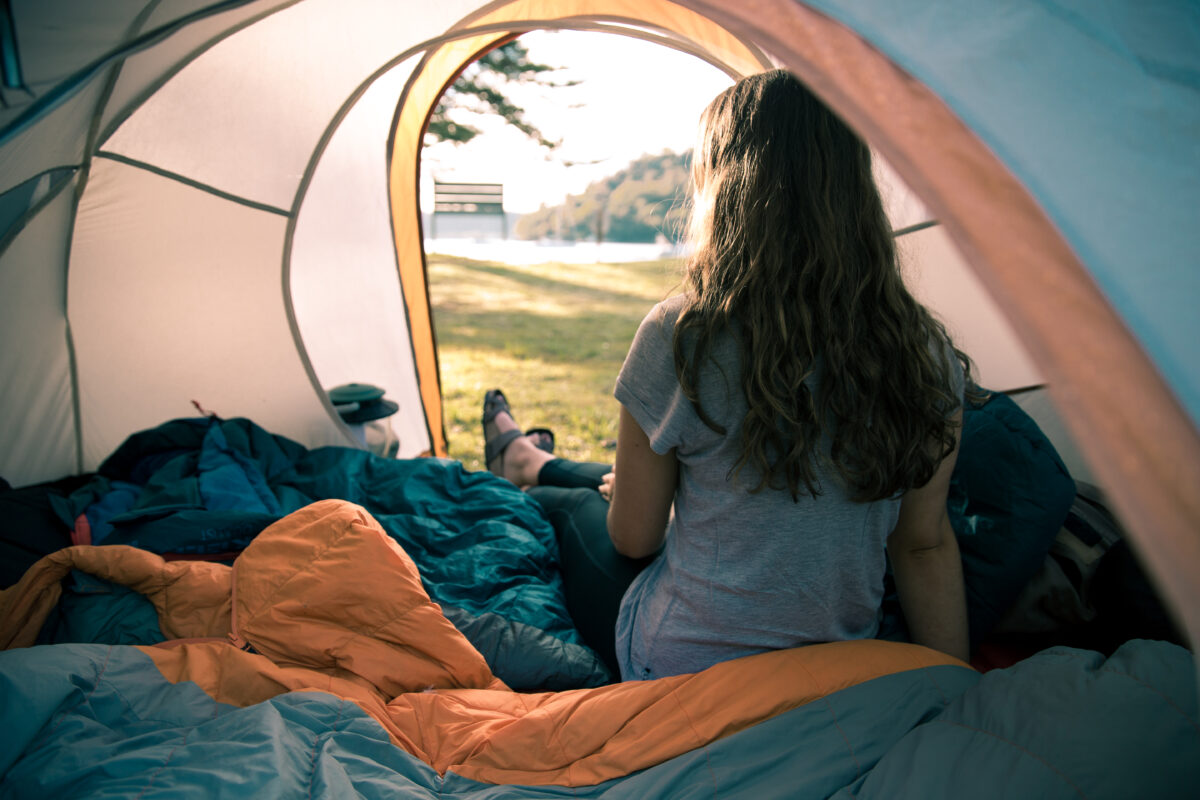
So you’ve hiked all day and you’re feeling great, you’re ready to make dinner and put your feet up, but there’s one thing left to do: set up a place to sleep! Let’s cover the key things you’ll need and things to know.
-
Sleeping mat
Many first time overnight hikers think they can get away with just sleeping on the ground and we’re here to tell you that’s a bad idea. Even if you’re particularly good at sleeping on hard surfaces, the ground below your tent is rarely going to be lush grass, and might be rocky or uneven, sleeping mats fix this problem.
They also insulate you from the ground, which is very important. Even with the warmest of sleeping bags, sleeping on the cold ground will quickly suck the heat out of you and you’ll have a bad sleep.
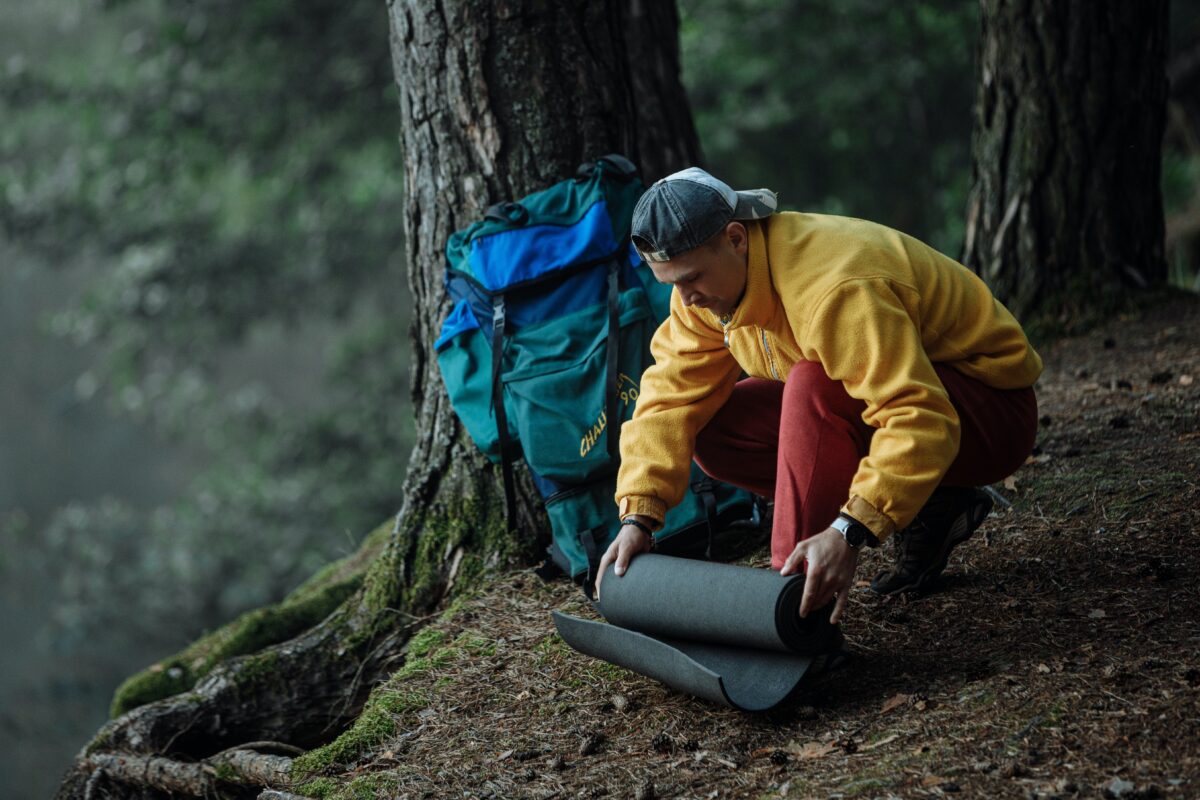 Photo Information
Photo InformationThirdman via Pexels (203)
Hiking sleeping mats (or ‘sleeping pads’) can be closed cell foam, self inflating, or air mats, and they all have pros and cons. Closed cell foam is cheap and well-insulated, but not particularly comfortable, self inflating mats are much more comfortable, but generally heavier, while air mats are the lightest, but warm ones can get quite expensive.
As always, it’s best to head into a hiking store where you can lie on the mats in person and talk to the staff.
-
Sleeping bag
A good sleeping bag can last for decades and you’ll form a special bond with it, but how do you choose? Down sleeping bags give a lot of warmth for their weight, but they’re expensive and not particularly great if they get wet. Synthetic bags on the other hand are a bit heavier, but very hardy.

Make sure when you’re making a purchase that you look at the ‘comfort rating’ of the temperature guide. If you sleep cold, it’s best to be cautious and get a sleeping bag rated for the lowest of temperatures you expect to be hiking and camping in.
There are all kinds of fits, specific bags for women and children, and even bags that zip together for a cuddle.
If you’re just starting out, heavier camping style sleeping bags will usually be fine, but you can save a lot of weight with a hiking-specific sleeping bag.
-
Pillow
Pillows are underrated when hiking. Many inflatable ones are inexpensive and much better than putting a pile of clothes under your head. Trust us.
-
Inner sheet
Hiking and camping stores sell all kinds of inners that help keep your sleeping bag clean and add warmth in the winter months. In summer you can sleep in the inner sheet and throw your sleeping bag over you like a doona.
Ranger Tip: Plan to reach your intended campsite at least an hour before sunset. That way you can get familiar with the area, put on warm clothes, and ensure your tent is set up while there’s still daylight.
-
-
5. Tent
You need somewhere for that sleep system to go, enter: the hiking tent. There’s something so satisfying about crawling into your tent and spending the night in a little portable shelter that you carried with you. They’re particularly satisfying if rain or wind comes in, as they’ll keep you warm and dry.
Choosing a hiking tent is a big task. If you can, rent or borrow a tent to get an idea of what you like and don’t like. Some people are happy with a single door and climbing over each other, others like a door each, and many people prefer the privacy of a 1 person tent.
Ranger tip: When you’re choosing a campsite look for somewhere that is as flat as possible. If you have to camp on a slight slope, position your tent so your head will be uphill.
View this post on InstagramHiking tents generally come in three or four season varieties. Three season tents are generally fine and feature more mesh to help with airflow in warm conditions. Four season tents are designed for winter, specifically the snow, and have less mesh on the inside and stronger materials to cope with blizzards.
You’ll have to decide whether you want a freestanding tent or a tension-based that relies on being pegged out. Freestanding tents are great for rocky environments, or tent platforms, where it can be difficult to peg a tension tent effectively, but they are usually a bit heavier.
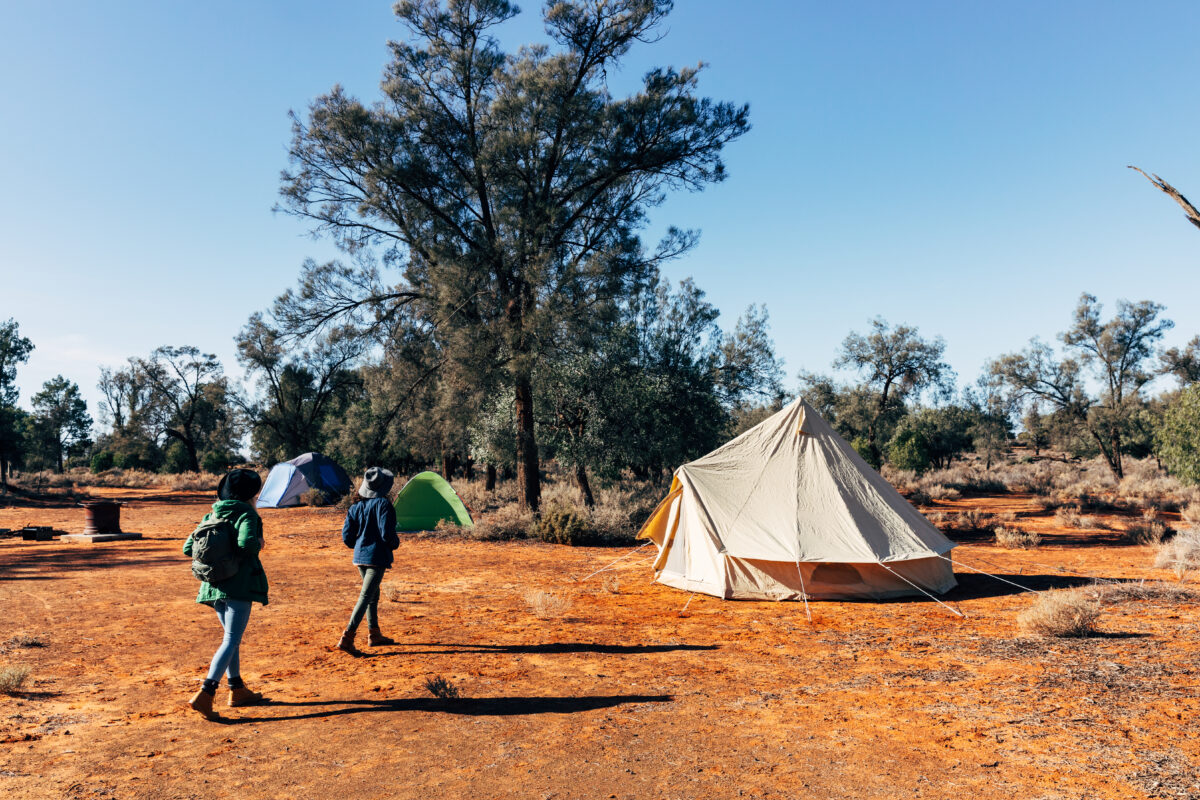
Whichever style you choose, make sure that the tent is waterproof and designed for hiking. Some very cheap tents are really only designed for a day at the park, and will be unsafe if a storm happens to roll in. Larger camping tents are generally far too bulky and heavy for hiking.
It’s best to get in the habit of always using the guy lines on your tent to add extra strength to your setup. Wind can come in at any time and pegging out guy lines will keep it stable and help avoid broken poles, or worse. Setting up the tent completely, using all of the pegs and opening the vents, can also help airflow and avoid condensation building up on the inside.
Not a fan of roughing it? the Murramarang South Coast Walk: Cabin package self guided is the multi day hike for you, where you’ll hike the track and stay in cabins along the way.
Ready to go?
There are so many ways you can approach a multi day hike, but if you nail these basics you’ll be well on your way to a good time out there. Talk to people, borrow or rent gear if you can, and head into outdoor stores to learn the difference between the many products on offer.
Remember that almost everything has pros and cons, and that trying to buy one item that does everything well, in every situation, might leave you with a piece of gear that’s frustrating for other reasons.
It’s important to prepare for your multi day hike before you start sorting out your hiking gear, so you know what gear you will need.






